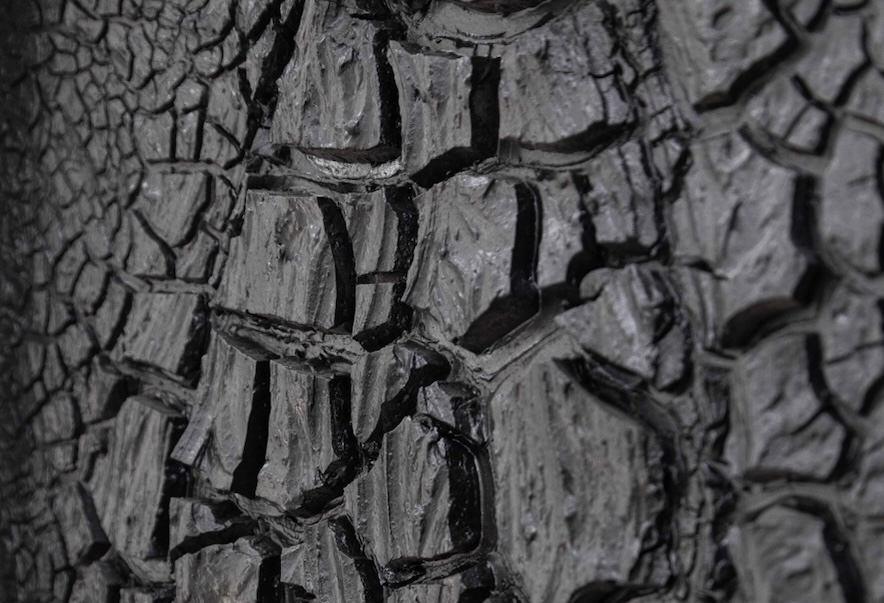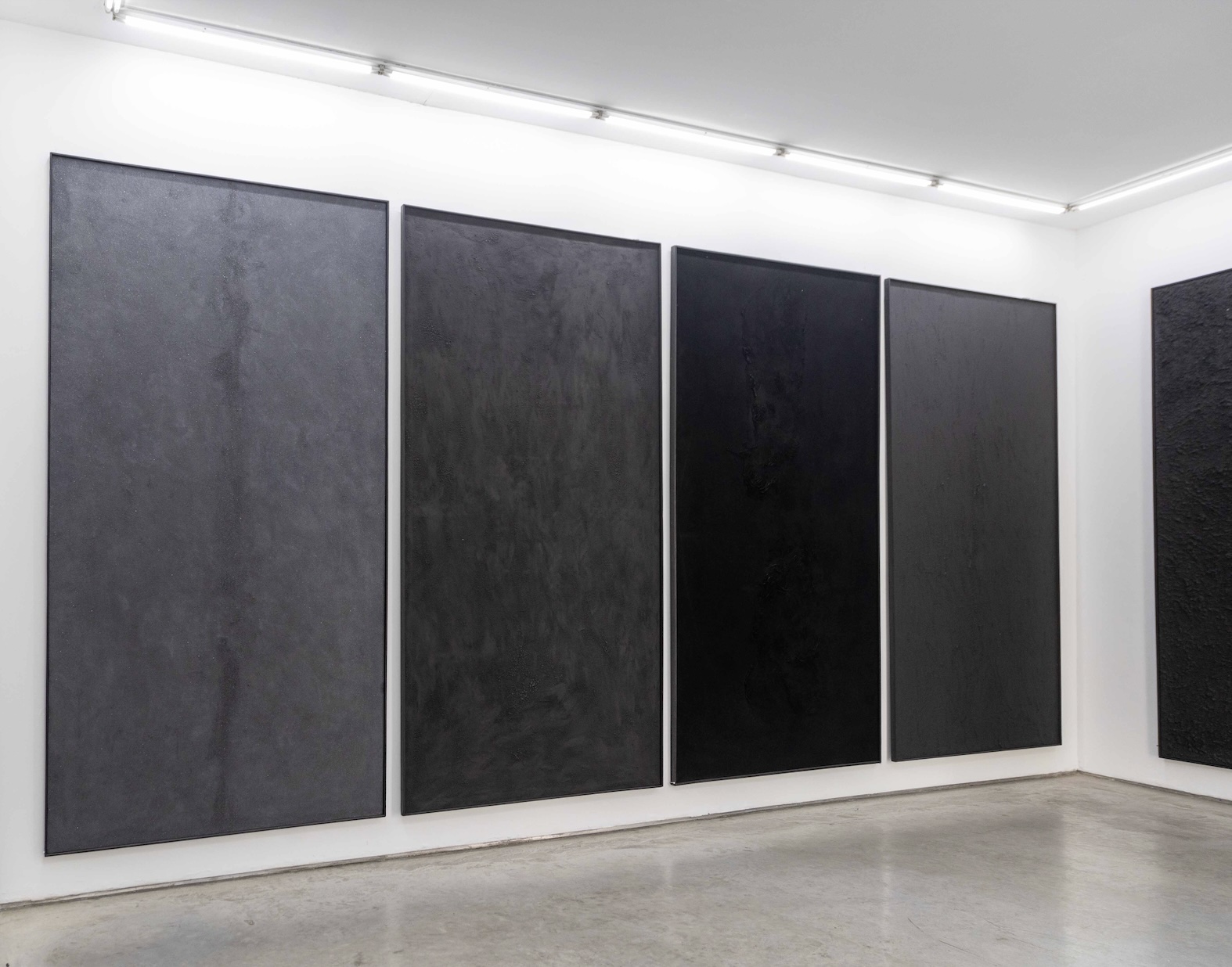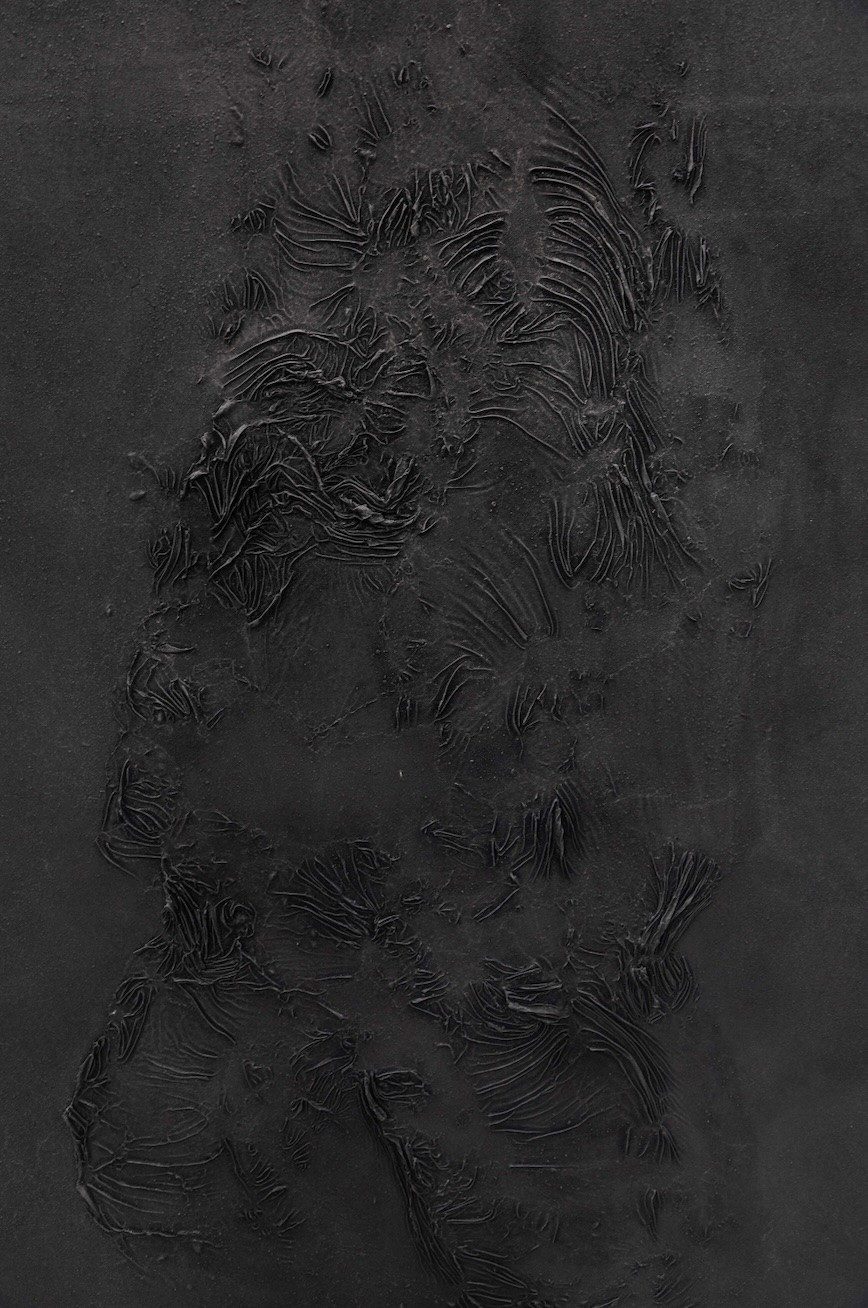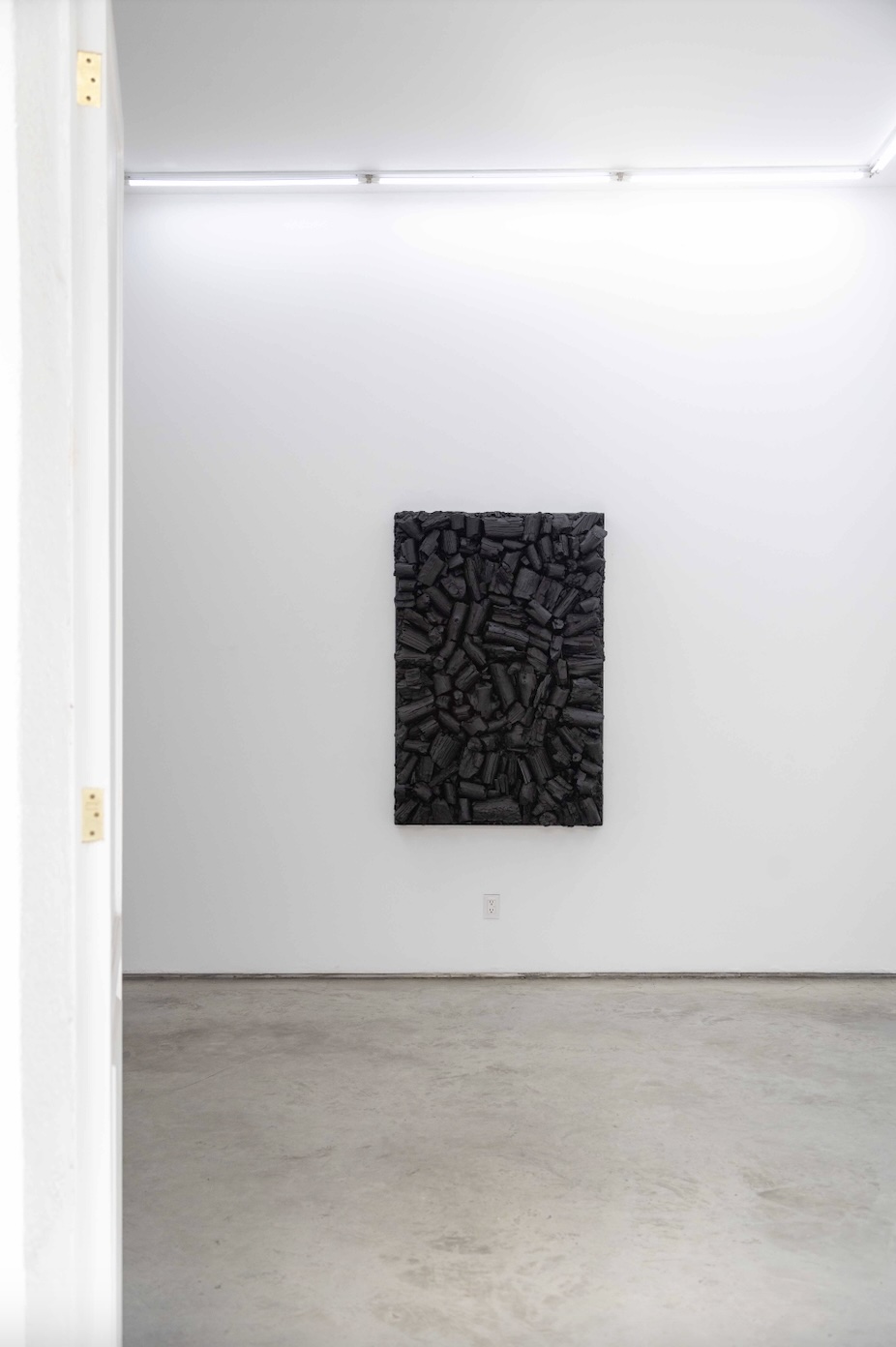
Review
Dark Potency: Beatriz Zamora at Galería Enrique Guerrero
by Mariana Paniagua
Reading time
4 min
Black is not a totality. On the contrary, it is multiplicity: absence of light, space, the result of combustion, lithic shine, ash, potency.
Upon entering the first room of Galería Enrique Guerrero for the Negro exhibition, I quickly realize that in Zamora's paintings, black is not optical—it has texture. The works have a cracked surface, as if it were the aftermath of burning. It evokes a charred tree trunk or the cooling surface of magma. The canvas seems to serve as a container for something that feels like the earth itself, as though a segment of tectonic terrain has been cut and lifted from its horizontal place on the ground to the verticality of the wall.

I start to wonder about the pain of segmentation or burning. These paintings seem resilient in some way. The cracking appears as the result of a scab-like process. There are few traces of Beatriz’s direct intervention on the paintings. I imagine the artist’s geological interests, as though she deliberately refrained from making the work appear "made" by her, leaving it open to a space of mineral contemplation.
There is little of her hand in the pieces: a few drawings seem faintly marked by the grease of her fingers, barely visible at very specific angles where the light hits them.
In Beatriz's paintings there are no shapes, only the refraction and absorption of light, texture: porosity, shine, and accumulation.

I find myself reflecting on the boundary between formalist abstraction—where gesture does not seem to engage with the materials—and sensitive attention to the matter itself. Does such a division exist? In the commercial art circuit, maybe not, but it does in the processual and material realm.
I read an interview with Zamora by Sandra Sánchez, where she reflects*:
At that time, which I do not remember, when the great explosion decided to give birth to itself and with it the infinity of infinities, time, space, in that hurricane of sacred fury, in that formation of particles, atoms, electrons, and cosmic interrelations, we were all born, everything was born. Eons have no measure. Wisdom, intelligence, are at the same time space and infinity. Physicists say that 98% of all matter in the universe is dark matter; it is black, absolute black, it is emptiness, silence, nothingness. And that space between galaxies, physicists call it the total potential of natural law, while wise mystics call it the heart of the dark mother. I call it black, the true essence of life.

I realize that for the artist, black is a matrix, a space of multiple possibilities, not merely the residue of something burning, as I had initially thought upon entering the exhibition. However, the material Zamora uses to paint comes from a chemical transformation: combustion. I think about the difference between the representation of an idea and the material principles of something. The idea exists in the discursive realm and, in varying degrees, in bodies. I try to focus on that, as if becoming aware of the weight I place on each foot.
Perhaps the difference between material attention—as a dialogue with the rhythm in which something forms—and formalist intention lies in the instrumentalization of the materials.

I speculate on Beatriz Zamora’s process, which is not articulated in words in the exhibition—there was no wall text or gallery sheet—but is present in the material expressions of her work: evocations of combustion, the mineral interior, and the spatiality of emptiness as potential.
I have the sense that asking questions—through the body—about the materiality of what we consider a surface might fracture the sense of one-sidedness that can come from viewing an exhibition in a white cube.
Translated to English by Luis Sokol
* Beatriz Zamora, “A la búsqueda del negro vida”, by Sandra Sánchez, revista 192, October 2023, https://revista192.com/beatriz-zamora-a-la-busqueda-del-negro-vida/.
Published on January 9 2025